Background and caveats
Hermeneutics is the branch of knowledge that deals with interpretation, especially of the Bible or literary texts. Some bizarre results emerge when this branch is applied to the interpretation of the Veda texts (both verbal and non-verbal communication).
Translated as sacrifice, Hermeneutics deals with Yajña as : "...the offering of food, objects or the lives of animals to a higher purpose, in particular divine beings, as an act of propitiation or worship. While sacrifice often implies ritual killing, the term offering (Latin oblatio) can be used for bloodless sacrifices of food or artifacts. For offerings of liquids (beverages) by pouring, the term libation is used." https://en.wikipedia.org/wiki/Sacrifice
Such a foundational delinquency in dealing with the core process, Yajña, leads to many distortions in interpretation. In the Hindu tradition, Same problems occur with the use of a word like 'ritual' in Hermeneutics. Yajña has very specific metaphysical foundations. Yajña performance is NOT a ritual (a repetitive performance as an obsessive-compulsive psychological disorder) but a declaration of respect for ancestors who have handed down over several generations sacred processes of Yajña performance. Beyond a belief system, it is the very essence of understanding of one's journey as a pilgrim from Being to Becoming. Rituals are also NOT magical laments but an expression of veneration for the identity bequeathed by ancestors to the present performer of Yajña.
Linked to the Greek word ἑρμηνεύω (hermeneuō, "translate, interpret"),[9] from
ἑρμηνεύς (hermeneus, "translator, interpreter"), an example is Aristotle's work Περὶ Ἑρμηνείας ("Peri Hermeneias"), commonly referred to by its Latin title De Interpretatione and translated in English as On Interpretation. "It is one of the earliest (c. 360 B.C.) extant philosophical works in the Western tradition to deal with the relationship between language and logic...Vedic hermeneutics involves the exegesis of the Vedas, the earliest holy texts of Hinduism. The Mimamsa was the leading hermeneutic school and their primary purpose was understanding what Dharma (righteous living) involved by a detailed hermeneutic study of the Vedas. They also derived the rules for the various rituals that had to be performed precisely. The foundational text is the Mimamsa Sutra of Jaimini (ca. 3rd to 1st century BCE) with a major commentary by Śabara (ca. the 5th or 6th century CE). The Mimamsa sutra summed up the basic rules for Vedic interpretation."
With these caveats about the distortions introduced by hermeneutic studies, an attempt will be made to present the 'meanings' of texts and non-verbal communications related to Yajña, which simply means 'sacred worship' as explicit from the following etyma and translations in English:
yajñá m. ʻ sacrifice ʼ RV. [√yaj ]Pa. yañña -- m., NiDoc. yaṁña, Pk. jaṇṇa -- m.
The link to venerated, living supernatural being (accord. to some native Comms. = यज्ञ , पुजा , पूजित &c ) RV. AV. VS. Br. Gr2S3rS. The link to इष्ट 1 [p= 169,2] reverenced , respected, cherished RV. S3Br. Ka1tyS3r.
Without any comments at this stage, a translation (Google) from French, is presented of an account of Religious Archaeology of Yajña in two web-pages.
Subsequent posts will present an interpretation of the RigVeda texts based on Sayana's interpretation well articulated in Wilson's English translation.
S. Kalyanaraman
Sarasvati Research Center January 26, 2017
Note on the sacrificial act in ancient India (1):
Divine Generation, Sacrificial Regeneration
These two pages (HTML) try to subscribe to a double requirement: - classic, a fidelity to the letter that borrows its means from the doctrine of specialists; - more unusual, insofar as these means also serve a more general hermeneutic interest in the affinity of evaluation - of the definition of good and evil - and of living form, with the aim of contributing to research Invariants that informs this site. It is in this idea that, referring to the philological exegesis and the traditional exegesis and authorizing itself, in particular, as regards the interpretation of symbolic equivalences, of the reading of the Sinhalese theologian A. Coomaraswamy Which the texts studied here have a meaning that archeology does not exhaust), the remarks which follow aim at highlighting the essential articulations of the Vedic sacrifice, as revealed by the liturgical manuals of the Brahmans.
"The mortal has the same matrix as the immortal." (Rg Veda, I, 164.30)
"The observance of the rule applies to ritual as well as to creation."
(Satapatha-Brahmana, XIV, l, 2.26)
[NB The "r" vowel is pronounced r (i). The diacritical signs proper to the romanization of the Sanskrit language are not reported on this webpage.]
The One and the Many
Prajapati, the Brahman speculation central character is the "Lord of the generation" (prajana: descent; pati: master). (Satapatha-Brahmana, VI, 1,1,5 - now abbreviated S. Br) "At the Origin, nothing existed but him "(S. Br. 11,2,4,1). All that is involved in the emanation (srj root) of Prajapati. "Prajapati had a desire: to be multiple, to reproduce" (S.Br. VI, 1,1, 8). "In the beginning this world was not as it neither sat nor asat. Nothing existed that the mind (Manas) which is neither sat nor asat. This spirit was in him the desire to manifest as some something definable (niruktam) real. He aspired to personality (atman). He practiced then the asceticism (tapas) and began to manifest itself, to take shape "(S.Br. X 5.3, the s Creation by asceticism, seminal emission, parthenogenesis, dismemberment, splitting, incest (Prajapati being united to its own emanation), coupling (by interposed emanations) are modalities of divine creation. "So his force grew outside of him and became an egg; he shared it nourishes; the creatures were born" (Taittirîya-Brahmana, 1,6,2,4 - now abbreviated T.Br.) . "He practiced burning ascetics, so the three worlds came out of him" (S.Br. II, 5, 8, 7). "As he was getting hot, five were born: Agni, Vayu, Aditya, Candramas and Usas" (S.Br. VI, 1,2,1-3). "His head became the sky, his chest the atmosphere, the ocean waist, his feet the earth. It was he who uttered all that is in the universe" (Sâmavidhana-Brahmana, 1,1,5) . "From his superior breaths he sent forth the gods, the inferior ones the mortal creatures" (S.Br. X, 1,3,1). "Of his breath, the animal species, of his spirit, man, of his eye, the horse, of his word, the goat" (S.Br. VII, 5, 2, 6). "He possessed his own daughter" (S.Br. 1,7,4,1). "By Agni, he mated with the earth, ... by Vayu, with the atmosphere, ... by Âdiitya, with heaven, ... with the spirit, with the word" (S.Br. VI, 1,2,1-3) ...
Prajapati, the Sacrifice
For creation to take place, there must be a transfer of being, which presupposes a loss of the creator: symbolically a death of the First, a self-sacrifice of the One. Prajapati is the first sacrifice and the first sacrificial victim - and, absolutely speaking, the first beneficiary of the sacrifice: "When he had emitted beings, he rose upward ... For there was not yet there, Other than he who was worthy of sacrifice "(S.Br. X, 2,2,1). The gods proceed from the sacrifice of Prajapati who "gave himself to the gods" (S.Br. XI, 2,2,1). "The sacrifice was theirs, for it is the food of the gods." "He gave birth to Agni from his mouth," and he created this "food-eater" and considered, "I am the only food here" and when Agni turned to him with his mouth wide open, his own greatness came from him "When he had sent forth the creatures, his members were detached from him" (S.Br 1, 6, 3, 35), because creatures are its members One by one, detached themselves from him (S.Br. VII, 5,2,26). "He lay, exhausted" (T.Br. 1,2,6,1). "When he had issued all Beings, Prajapati thought it was emptied. He was afraid of death ";" death which is evil seizes him "(S.Br. X, 4,2,2 and X, 4,4,1).
That is why the One must be recomposed. "Agni is the father of Agni, as Agni has recomposed him, Agni is his father. As he has issued the gods, he is the father of the gods; Inasmuch as the gods have recomposed it, the gods are its father "(S.Br. VI, 1,2,27).Because the sacrifice of the One (self-division and death) is a formal property of creation, the sacrifice of creatures "resorbs" the One divided into them and renders it to itself.
Spirit of male form and speech
The model of the earth's sacrifice is given by Prajapati when he wants to recover its fullness: "When it was given to the gods, Prajapati issued a picture (pratima: image, symbol). Itself is the sacrifice by sacrifice, he Redeemed himself to the gods ", then" the gods restored him to his first vigor "(S.Br. XI, 1,8,4). "He convinced the gods redeem it self (atman) that he had sacrificed them" (T.Br. II, 3.6, 1). Image of the self, the power of sacrifice is in the power of representation.
"Prajapati is the spirit" (Taittiriya-Shamita, II, 5, 11.5 - now abbreviated TS) "From non-being, the spirit was issued; the spirit issued Prajapati, Prajapati issued beings" (T .Br.II, 2,1-10). The breaths emit seven males, "then the nobility and the breath of these seven males, they concentrated them above: it was the head ... This male became Prajapati" (S.Br. VI, 1,1-5). "In the beginning was the Brahman, and he sent forth the gods, and he considered," How can I penetrate these worlds? "Then he penetrated them by these two: form and name: Everything that has a name, Is what is this name, and even that which has no name, what is known by the form, it is this form, it is just as much as the form and the name "(S. , 2,3,3-6). Speech, the fruit of the asceticism of Prajapati, is the instrument of distinction. "The creatures were in confusion, and Prajapati penetrated them by form and name" (TB II, 7, 1)."Prajapati desired to multiply and procreate; he looked," Behold, I carry an embryo, I want to procreate by Vac (speech) "; he issued Vac" (Tandya-Maha-Brahmana, 7,6,1- 3 - now abbreviated as Td-Br.). Prajapati was the whole universe to himself: Vach was his, and Vac was his second, and he considered: "This Vach, I wish to utter it; It will be transformed into infinity in all things!"He cut off a third, it was the earth..." He cut another third, and it was the atmosphere... "He tossed up the last third, and it was heaven." Td.Br. 20, 14, 2 and 5) "It was transmitted, it fills the universe" (S.Br. VI, 1,1,10). "He entered the waters with his triple knowledge; An egg developed "(id.) The formula is the creative tool because" Prajapati is Vâc "(S.Br. V, 1, 5, 6)." Prajapati is all sacred formulas ". (S.Br. VII, 3,1,4)" Rites and formulas are the matrix from where Prajapati issued creatures "(Maitrayani Samhita, 4,7,4 - now abbreviated as MS).
Image may be NSFW.
Clik here to view.![]() Image may be NSFW.
Image may be NSFW.
Clik here to view.![http://www.anthropologieenligne.com/images/vac_1.gif http://www.anthropologieenligne.com/images/vac_1.gif]() Vâc - Sarasvati
Vâc - Sarasvati
Clik here to view.
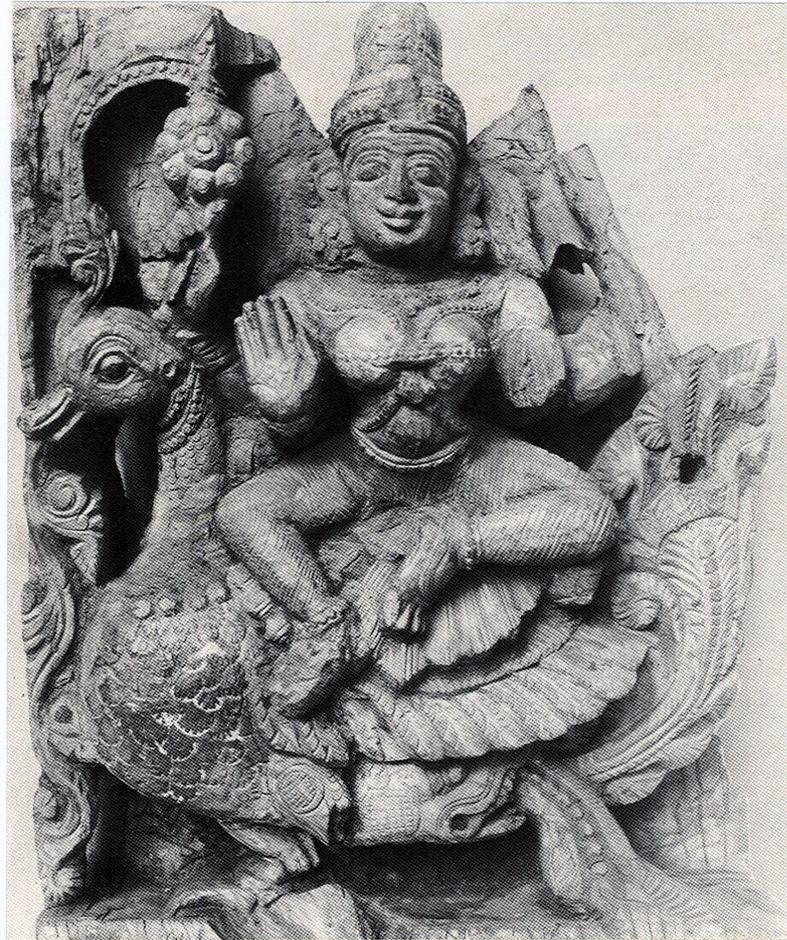 Image may be NSFW.
Image may be NSFW.Clik here to view.
 Vâc - Sarasvati
Vâc - SarasvatiThe sacrifice and the gods
The challenge of sacrifice is immortality. The struggle of the enemy brothers, the Devas and the Asuras, gods and demons, the son of Prajapati, has for its object the possession of the heavenly world by sacrifice. "The Devas and Asuras were mortal" (S.Br. II, 2,2,8): sacrifice is the means of conquering and conquering immortality. "It was the perfection of the sacrifice that gave the gods the heavenly world, and it was through the faults of sacrifice that the demons were defeated" (3: 9, 10). It is their presumption that made the demons ignore the true meaning of sacrifice. "Sufficiency is the mouth of ruin" (S.Br. V, 1,1,1). The Asuras, out of pride, thought, "To whom then could we make an oblation?" And they made an offering in their own mouth, but the Devas each in the mouth of another Prajapati gave himself to them and the sacrifice Belongs "(S.Br. V, 1,1,1-2). Prajapati said: "The sacrifice will be your food, immortality your subsistence and the sun your light" (S.Br. II, 4, 2, 1) The gods are the form of truth: Has only an observance which the gods practice: the truth "(S.Br. III, 4, 2, 8).
The Man and the Sacrifice
Once in possession of the sacrifice, the gods concluded a pact with death. Death was addressed to the gods in these terms: "There is no doubt that men will, by this means (sacrifice) become immortal and what, then, will be my lot?" - Let no one, after us, become Immortal with his body, "replied the gods," thou shalt take the body as thy part, and it is stripped of the body [...] that men may become immortal "(S.Br. X, 4, 3, 9). "Hunger is death" (S.Br. X, 6, 5, 1) the sacrifice is the "food of immortality" (S.Br. IX, 5, 1, 8).
The world is the dismembered transcendent. No being can exist without the Sacrifice which is their common origin. The oldest cosmogonic myth, the hymn to the Purusa (Rg-Veda, X, 90 - now abbreviated to RV) posits the (formal) identity of man and the absolute. The term purusa refers to both man and cosmic Man. "Man is none other than this universe ... / He is the master of the immortal realm / Because he grows beyond food" (RV X, 90: 2). The sacrificial rite allows mortal man to join the absolute.Creation was a victory of Prajapati on death: "Prajapati carried all the beings in his bosom, and death, which is evil, carried them away." He said to the gods, "With you I want to snatch all these beings from the death that is "The sacrifice is the redemption by the sacrificer of his mortal body:" Man, from his birth, is a debt to death; When he sacrifices, he redeems his person to death "(S.Br. 111, 6, 2, 16) The sacrificial victim is the sacrifice himself who redeems himself by the ritual gift of his person: Is the oblation "(TS VI, 1,4,5) Debt to the gods:" Because he is by birth a debt due to the gods, he satisfies the gods in that he sacrifices "(S.Br. 1, 7, 2, 6) Sacrifice is an operation which allows the body to be made to die and rise to the divine.
Such would be the final meaning of "to give tribute": to understand oneself and to become an attribute of the Self. One asks: "Who is best, who sacrifices to the Self or who sacrifices to the gods?" - "He who sacrifices to the Self and who knows how to get rid of that mortal body which is evil and take possession of the celestial body, The one who sacrifices to the gods is the one who knows: "I offer a sacrifice to the gods, I honor the gods" - such as an inferior who bears tribute to a superior or a god A man of the people who bears tribute to the king. "He does not, however, conquer a celestial part as great as the other" (S.Br. XI, 2, 6, 13-14). The payment of the double debt of man frees the divine divided in him. "When the Father has sent forth his children ... he can no longer reunite to himself, so he exclaims:" Those will flourish who will rebuild me from below! " The sacrifice of man is here the reverse act of the creative act: for the divinity, to sacrifice is to be mortal: for man, Is to be immortal.) By reintegrating the divine, man resorbs creation, but by unifying and identifying with the creator, he perpetuates the work and the order of creation.There are two sacrifices of Prajapati that Divides into beings, and then emits an image of himself to redeem his person from the gods.There are also two sacrifices of man: he dies symbolically and then returns to existence. Double: it gives possession of the heavenly world and the terrestrial world.
Structure of the sacrificial system
The correlations of the system could be described as follows:
1 - The death-sacrifice of God's creation:
- by duplication: creation of the gods;
- by emanation or dismemberment: creation of mortal beings.
"From Prajapati, one half was mortal, one half immortal. As it was partly fatal, he was afraid
Of death ... Five elements of his body were mortal: hair, skin, flesh, bone, marrow; Five immortal elements: spirit, word, breath, sight, hearing "(S, Br X, 1,3,27) It is in so far as it is a world that Prajapati is mortal. If the creation is real (if the death of Prajapati is real) and if it is to be preserved, the restoration of Prajapati can only be effected by symbolic means:
Prajapati is reconstituted in virtue of its power of duplication: it emits an image of itself which is sacrifice and redeems its person to the gods (S.Br. XI, 1,8,4);
- the son recomposes the father (S.Br. VI, 1,2,27);
The gods recompose it by the sacrifice which consists in restoring its vigor to the creatures: "When he had uttered the creatures, Prajapati was exhausted, the gods gathered together the juice and vigor of the beings, and used it to cure it" (T.Br. 1,2,6,1).
2 - Man is a mortal creature, but the only creature who sacrifices (S.Br. VII, 5,2,23). There is in him more atman (Aitareya Aranyanka, 2,3,2). He thinks in the meaning of the world and reflects on the meaningful articulations of creation. He lives among mortals and immortals. By what is divine in him, he can identify himself with the divine. By separating himself from his mortal nature, by abandoning his own body, he overcomes death: he unites the divine divided in him. He thus assimilates himself to the One and can recover his body. Man can only find his seat here by redoubling the creative emanation. The two times of the earthly sacrifice respond, in reverse order, to the two stages of divine sacrifice: the sacrificer dies symbolically, assimilates himself to the divine, and then reappears to existence and establishes himself in meaning.
The two periods of this sacrifice can be examined by discussing the following points:
A - The consecration of the sacrifice; The killing of an animal victim.
(Two techniques that allow the sacrificer to stage his own death).
B - The division of the victim killing and consumption of the sacrificial portion; The construction of the altar of fire. (Which correspond to the rebirth of the sacrifice and the recreation of creation).
A - The sacrifice closer to death
Purification, mortification, reintegration
First time of sacrifice, the symbolic death of the sacrificer:
- It empties into the fire as a handful of grass (prastara) or sand (S.Br. VII, 2,1,6);
- they immolate an animal victim who represents him;
- he dies to terrestrial existence through consecration (purification, fasting, fetal regression).
In representing his death (the devoted exhausted, the victim "appeased"), the sacrificer becomes a god (MS 3,6,1).
1 - Consecration (diksa)
The soma sacrifice (vide infra: The eagle and the snake) requires dedication, sacrifice of mortification: "It goes from this world he who does the diksa (Aitareya Brahmana, 6,3,9). In truth, he is sacrificed as a victim by all the divinities who has received the dîksa. " The sacrifice is said to be "sharp as a razor", for it is a work of death: the efficiency of its substitution arises from the equivalence of substituted terms.
There is, moreover, a sacrificial ritual for man who desires death. This is to operate in a dedicated ad regressus uterum purified after its deadly substance. The sacrificer builds a sacrificial hut (distinct from that in which he celebrates the domestic worship), rectangular, oriented from west to east and endowed with an opening towards the four celestial regions. The fire is symbolically transported from the ordinary hut to the hut of consecration: the sacrifice makes "raise" the fire in its friction woods in the first one and will make it "descend" by these same friction woods in the second. After shaving, trim the nails (eyebrows, beard and nails are the "dead" part of the body - TS VI, 1,1,2), bathe, anoint the eyes and the body, Nine and surrounded a sacrificial cord. Once recited the formula called "seizure of the sacrifice", installed on an antelope skin and covered with a veil, the sacrificer closes his fists and "holds back his word". In his hut heated by the sacrificial fires, it ensures fast and "to" exhaustion "(S.Br. IX, 5,1,1 c.)" Until it became lean "(Apastamba . -Srauta Sutra, X 14.9 - now abbreviated Ap.S.) "When it became lean, it is sacrificial" (Medhya: own sacrifice) "... This, of its members, Is absent, he has sacrificed it ... When the skin touches the bones, it is sacrificial.Fat, it comes into diksa; lean it sacrifices "(Ap.S. X, 14.10)." Uni gods, worn out with fatigue, rich with tapas, then he lit the fires "(S.Br. II, 1.4 7). "it is not allowed to go out of the hut because it is the womb where it is locked" (MS 3,6,7). "the priests turn into embryo to whom they give diksa . They sprinkle it with water: water is the virile seed "(A.Br. 6,3,9)." The sacrificial hut is its womb; The skin of a black antelope is the chorion; The garment is the amnion; The belt is the umbilical cord. The one who makes the diksa is an embryo "(MS 3,6,7)." Now the embryo circulates inside the matrix. As the sacrificing sometimes moves and then turns, for this reason the embryos sometimes move and sometimes turn "(S.Br. III, 1,3, 28)." The sacrificer holds his fists closed because the embryos hold Fists clenched "(S.Br. III, 2,1,6)" It is a fact that the gods are the truth and that man is the error.Therefore, in saying, "I go from error to truth," he passes from the world of men to the world of the gods "(St.Br. I, 1,1,4).
2 - The killing of an animal victim who represents the sacrifice
A - The sacrificial post
No animal sacrifice without sacrificial post (Yupa) (S.Br. III, 7,3,1). Ritually slaughtered, cut and anointed skyward into the pit that receives the (seat of the ancestors represented by a grass littered), the Yupa is "actually sacrificing himself: same size, oriented to the fire So as to personify the sacrificer "(S.Br. III, 7, 1, 11). (A link is fixed at the height of its umbilicus). "What is buried belongs to the fathers, the bond belongs to the plants, which is above all the gods, the summit to Indra and the rest to the Sadhya" (TS VI, 3, 4). By its size, its position, its division, the sacrificial post symbolizes the intentionality of the sacrifice. (The right station of man expresses the double postulation of a being at once mortal and immortal). The sacrificial post is not only a vector of sacrifice ("O tree, let sacrificial food go to the gods" (RV I, 188,10), related to the cosmic pillar, it connects heaven and earth but also fixes l ordo rerum "I want to send a song to Indra, as a prop, by its strength, set heaven and earth" (RV X, 89.4) indicator sacrificing, it exposes the structure and. ' Efficiency of sacrifice.
B - The sacrificial victim
Symbolization, appropriation, purification
She represents the sacrifice: "Male for male, for the victim is a male animal and the sacrificial is a male" (S.Br. XI, 7,1,1). It must conform to the object of sacrifice (species, color, sex), without infirmity or disease. It is bathed during libations accompanied by prayers (those also recited for the initiation of a young Brahman). He is received on the sacrificial area by invoking the master god of cattle; We address praiseful words to her and flatter her with her hand. She is being asked to be sacrificed. It is then attached to the sacrificial post: "With the knot of the sacred order, I bind you O oblation to the gods," for this rope is indeed that of Varuna "(S.Br. 4: 1) He is made to drink purifying water: lustrations are made over the whole surface of his body, anointed with melted butter, and finally a priest, a brand in hand, "The victim is already supernatural, and the sacrificer can only touch it through the medium of ritual instruments.""We must touch the animal," say some; But if he touched it from behind, the sacrifice would die suddenly (but) he is led to heaven this animal, if the sacrificant did not touch him from behind, he would remain separated from the animal sky. That is why it is necessary to touch it with the two pins of the sacrifice. So that it is touched and not touched "(TS VI, 3,5,1).
Touching without touching, putting one's own death on the stage while preserving life is the benefit of symbolization, of the symbolically perfect approximation that is realized in the killing of the sacrificial victim. Purified by water, by word, by anointing and by fire, redacted from the principal "vices of (secular)", it remains to purify it of the major vice of its existence, that of existing. The order three times repeated by the priest: "Sooth his breath!" (Asvalâyana -Srauta-Sutra, III, 3,1,4 - now abbreviated to As.S), summarizes the sacrificial understatement. The executor is samitr- said: "giver of peace." Ritual killing is not a murder, but the final act of a division-purification process. "That's why he does not say," Give death! Kill! "For that is the way of man, but:" Calm her! She has passed! "Then, when he said:" She has passed! ", This one, sacrificing it, goes to the gods, and that is why he says:" He has taken the step "(S.Br. III 8, 15) For it is loosed from his mortal nature that the sacrificer becomes a god Each existence, under the empire of Varuna, master of the bonds, is a drama which is played between the ligature of the umbilical node And the denouement of death.A sacrificial appeasement is the resolution of all the tensions of existence, a denouement and a sanctification.The ritual is attentive to what the victim "understands" its role, it would be contrary to nature And for the purpose of the sacrifice that it expires by uttering a cry or by violently struggling, which would mean, in particular, that the sacrificer refuses to sacrifice himself, that the given death is not a sacrificial death, Appeasement, but a murder.
B- Renaissance of the sacrificial; Recreation of creation
Before animal sacrifice, the priest addressed the Diksita: "Loosen your belt, opens his fists ... Now we will challenge you by name and quality of your sacrifice". After having "made its place" in the immortals, the consecrated one is reborn: "The embryos are covered by the two membranes of the amnion and the chorion, and now it is brought into the world, and that is why it Discovers "(S.Br. III, 3, 3, 12). The second time of sacrifice repeats and completes this rebirth. "For man is truly" unborn. "It is through sacrifice that he is born (MS 111, 6, 7)." Reborn is born for immortality "(S. The principle of this rebirth consists in bringing the immortal to the mortal.) By assimilating to the One, man resumes and reflects the divine part which is in him. He picking up and summarizing the expansion of the One in the contingency of its limits, reconciles the One with the multiple, the sacrificing makes an imperishable ritual body and can live here "a whole life""An existence which days and nights do not exhaust before old age" (S.Br. X, 4, 3, 1) and, in the Fathers, an assured life of this sacrificial body (RV X (14: 8) It conquers the terrestrial part and the heavenly part, for "everything participates in the sacrifice and the creatures who do not participate in it lose all" (S.Br. III, 6, 2, 26). What is, all gods have a single principle of life: sacrifice "(S.Br. XIV, 3, 2, 1) which circulates the" current of abundance "(TS V, 4, 8, 2) Between the two poles of the Duplication. "The gods subsist from what is offered to them here below, as do men from the gifts that come from the heavenly world" (TS III, 2,9,7).
1 - Sacrificial Consumption
"Food is life relationship" (Mantra Brahmana, 1,3,8). Because it is food and because it is consecrated, the victim endures and legitimizes the assimilation which is the end of the sacrifice: "If he did not consume his share, the sacrificial was excluded from the sacrifice. Part of the sacrificial, it is the sacrifice "(A.Br. VII, 26,2). The body of symbolization is in turn subject to the principle of significant division: the victim that an ordered sequence of purifications has gradually "appeased" remains impure matter as an exuvia. The ritual finishes on the body the division that consecrated the victim. What is life belongs to the gods; What is dead belongs to the demons.
While the officiant sprinkles the victim's limbs with water, the sacrificing woman ("Because the earthly progeny is feminine" - S.Br. III, 8, 2, 6) purifies pre-purified water Openings of the "vital breaths" by making "drink" the orifices of the body of the victim (S.Br. III, 8, 2, 4). It brings life to the breaths that death has extinguished - which are the food of the immortals. The blood that flows during the butchering is dedicated to the demons: "You are the part of raksas" (Ap.S. VII, 18.4; S.Br. III, 8,2,4). The presence of the demons on the sacrificial area, evoked by an ellipse, or even denied, is in fact functional: if they were not given their share, they would "dwell" (TS VI, 3 , 2,9) on the sacrificial and his family. Indeed, there would be no sacrifice, but evil: mixture of the demonic and the divine, failure of the sacrificial separation. Instead of endowing the sacrificer with a ritual body, the sacrifice would deliver him to the powers of evil. "The" excrement pit "(Rev. VII, 16, 1) (outside the sacrificial area) receives the Drops of blood which will escape during the cooking of the heart, and moreover the stomach and the excrements, and the blades of grass on which the collected blood is spread, (...) in general all the unusable debris of the Sacrifices ".
God's hand, "juiciest" (RV III, 21.5), the central part of the animal (the omentum), called Yupa (the term also refers to the fetal envelope), particularly rich in fat - Asvalayana -Srauta-Sutra, II, 4.13 to 14, speaks of "fat waves" of VapA - considered the seat of the atman, is made to the gods. It is the Medhas, the sacrificial principle (S.Br. III, 8,2,17). This life, originally rendered, frees the sacrificer from his original debt and restores it to existence. "This is why it is said that one should not eat the food of a man in a state of diksa (...) but by the offering of the Vapa, sacrificing it delivers all the gods" (A .Br.6,9,6). It is solemnly brought to the sacrificial fire and roasted in such a way that the fat falls drop by drop into the fire, the vehicle of oblation (Agni is said to be "the mouth of the gods"). Once cooked, it is thrown into the flames. Through this offering, the sacrifice is freed from sickness, death and curse. "When one has been sick for a long time, it is because the vital juice goes to Soma and the body to Agni: one buys at Soma the vital juice and the body at Agni and, one would expire, at once one is alive" (TS II, 2.10.4). The victim is flayed and eighteen pieces are cut into parts of his flesh and cooked in the same container. The fat and foam of this cooking are sacrificed in the fire for the gods.
The sacrificer dies with the victim and is reborn by the offering of his vital principle. The treatment with which the body of the victim is subjected makes it possible to represent in the horizontal space of the sacrificial area the vertical (cosmogonically speaking) dimension of the signification. The first sacrificial division separates the pure from the impure. In the part thus purified, performing a division that attributes the atman to the deities. The procedure isolates, after this essential retribution which constitutes a complete sacrifice - the liturgy marks a significant stop when this act is accomplished; The priests receive their ritual fees - and which defines the inequality of the human and the divine, a community of sharing between the god and the sacrifice. By continuing to render the divine part - the fat and foam of the eighteen pieces of the victim - then by attributing a certain number of these parts to the celestial powers, the divine presence is affirmed at the sacrificial meal that is to be established.
Seven parts constitute the IDA. Ida is at once the sacrificial community and the goddess of fertility, the one who dispenses fortune and herds. In the legend of the deluge, Manu, the man saved from the waters, recreates the species and the herd with his daughter Ida, born of her sacrifice. "Who are you?" Asks Manu - "Your daughter ... I am the blessing of your sacrifice" (S.Br. I, 8, 1, 9). IDA is placed in the hands of a previously anointed priest, the other priests and sacrificing surround and touch. Invoking the goddess, "Come Come Aditi Ida!" By an injunction that completes the process of ritual division. The priest eats his share, then sacrifices it, in his turn, eats in silence. Finally, it distributes them to other priests who each represent a god. And runs out on Ida everything that is good there in the sacrifice and in the world (T.Br. III, 7,5,6). Hallowed the sacrifice can identify with significant articulations of creation.
2 - Construction of the fire altar ( agnicayana )
"Father, Prajapati, torn to pieces," the sacrifice "restores the fully and raises it as the gods have raised" (S.Br. VII, 1 , 2.11). The construction of the fire altar, a rite which it is said that it includes and includes all the rites "(S.Br. X, l, 5, l), stages the drama of what direction the human existence. as the creation is sustained by the division of the One, individual existence takes it meaning in the recovery of the spatial and temporal dispersion that is the destiny of the creature. "in the beginning was the Prajapati both mortal and immortal; his breath alone was immortal, his mortal body. By virtue of his sacrifice, his body became incorruptible and immortal. Similarly the sacri¬fiant is both mortal and immortal. By virtue of his sacrifice, his body becomes incorruptible and immortal "(S.Br. X, 1,4,1) - This is the sacrifice that Prajapati was reconstituted after creating the world, it is by the construction of the fire altar that reconstructs Prajapati sacrificed by collecting the joints of the world and built a divine body, "for the altar is the sacred body of the priest" (S.Br. IX, 4,4,9 ) As the soma sacrifice (infra.. 72) to which it is attached, the regeneration is agnicayana
When he had created, Prajapati was "gutted", he said to Agni: "Redials me!" Those were five Prajapati bodily parts that were disjointed: hair, skin, flesh, bones, marrow, which is why the altar is consti¬tué five layers of bricks. " Prajapati is the year: "After that Prajapati had emitted beings, his knuckles were disjointed Now Prajapati, in truth, this is the Year, and her joints are:. The two junctions of the day and the night, full moon and new moon and the beginning of the season. His disjointed joins, he was unable to get up "(S.Br. 1,6,3,35-36). "This Prajapati was emptied, this is the Year and five parts of his body that were disarticulated are the five seasons Because there are five seasons, there are five layers of bricks. When (sacrificing ) builds the five layers of bricks, it edifies himself with the seasons. " Prajapati is also the five regions of space determined by the five cardinal points (the zenith): "When (sacrificing) builds the five layers of bricks, it edifies himself with the five cardinal points ". The five layers of bricks are also: the earth, the atmosphere, the sky and the two intermediate spaces. But still: "The Year, no doubt, is death, because the time, through days and nights, eating away the lives of mortals, and they die; that is why the Year, c is death. and anyone who knows the Year, is death, the Year does not destroy his life by days and nights before his time. He can live a full life "(S. Br. IX, 4,3,1). "The gods were afraid of what Prajapati, the Year, Death, Who has the time ..." Prajapati taught them how to build the altar with 10,800 bricks represent the year (10,800 hours - day = night = 15 hours). "Having gathered all my forms, you will become immortal.""This is why men can become immortal through knowledge or the work pie When they say." Either by knowledge or by pious work "is the altar that is knowledge, c is the altar that is the work pie "(S.Br. IX, 4,3,9). "By building the altar of fire, sacrificing wins Agni, Prajapati, the Year, Death, Who has the time that the gods won" (id. 11). "This Prajapati was disarticulated is now gathered in the fire altar built here" (S.Br. X, 4,4,2).
The event is space and time. The sacrificial rejonction divisions of space and time - that constitute the order and unity of the various (the "torn Father") - under the concept of "Father reunited" defines the control of man. The sacrifice ensures, along with the cosmic order - because the orderly succession could succeed chaos: "The sun certainly would not rise if we do not offer theagnihotra morning" (S .br 11,3,1,5.) - the transcendence of this order. Each natural division - the pace of nycthémères, the syzygy, the seasons, the equinoxes, solar revolution is a significant joint; the recovery of this meaning in itself "deadly" confers immortality. The symbolic end jointing ensures circularity that saves the temporal degradation and spatial dispersion. While he has a purpose, that is to say, a structure, sacrifice, in this sense, has no beginning or end. "Its beginning is its end; the end is its beginning C ' is like crawling snake of Sakala, we can not know where to begin it "( Jaiminïya-Brahmana , 1,258). ( "We must prevent the sacrifice to discard In everyday life, we make knots at both ends of the rope to prevent discard;. The same is done nodes at both ends of sacrifice to prevent discard "(A.Br. 2,5,13-14).
the splitting of the divine in the form of fire is a fundamental point of the agnicayana . Car" Prajapati is Agni "(S. Br. VI ., 1,2,21) "the Father is the Son" (id VI 1,2,26). "because he created Agni, he is the Father of Agni, Agni because the 'restored, Agni is his father Double truth - father and Son, Prajapati and Agni, Agni and Prajapati "."; Prajapati and gods, gods and Prajapati - for those who know it "(id VI 1. 2, 13 and 27). the fire of the altar hearth is a reunification of originating Duplication. supporting the symbolism of the design and transcendence, it says "matrix of sacrifice" (MS 3,6,7). it starts in the ritual by friction matrix (RV III, 29.1-2). Agni receives the seed of Prajapati and reproduced in this way (S.Br. II 4,4,19). Just as sacrificing reproduces the fire, so it will reproduce offspring, his livestock, property and open it the heavenly realm. He blows on the flame, then sucks "putting his breath in the immortal" and "Immortal in his breath" (S.Br. II, 2,1,16):
"By lighting the fire, they say it, I will conquer the two spaces ... I will overcome death "(T.Br. I, 1,9,15). A first fire symbolizes the world of men, a second the world of gods. The first fire is a matrix impregnated with sand that represents the seed. The construction of the actual home (construction of Agni) makes rising sacrificing the world of the gods. The altar on the floor draws the shape of a falcon. When he built Agni, sacrificing themselves "factory", piece by piece, while reciting the hymns "immaterial and immortal soul" in the shape of falcon (S.Br. VIII, 1,4,8). (Assumption of the male principle: "The place where Agni ignites at the center of the testicles" - Brhad Âranyanka Upanishad , VI, 4.3) "When he is about to build Agni, it takes itself as it is his own ego that gives birth, and one becomes similar to that which is born ... He takes her by reciting the formula s: "as I am Agni" and in doing it takes him all blessing and all divinity "(S.Br. VII, 4, 1.1 sec.). Producer of meaning and life, "the one who knows" is both "sitting in reality" and "sit among the gods""(S.Br. XIII, 1, 3.22). The sacrificial fire is identical to creative ascetic birthplace "order and truth" (RV X, 190.1).
Image may be NSFW.
Clik here to view.![]()
Image may be NSFW.
Clik here to view.![http://www.anthropologieenligne.com/images/feu_1.gif http://www.anthropologieenligne.com/images/feu_1.gif]()
Map of the fire altar
(G. Thibault, Journal of the Asiatic Society of Bengal , 1875)
Clik here to view.

References : references.html
NB For a critical bibliography (partial) view:
Mircea Eliade: History of beliefs and religious ideas . Paris, 1976, I: 442-450.
http://www.anthropologieenligne.com/pages/sacrificeI.html
The eagle and the snake
Note on the sacrificial act in ancient India (2)
These pages (HTML) attempt to take out two requirements: - Classic, a fidelity to the letter which borrows its means to the doctrine of specialists; - More unusual, insofar as these means are also used by a wider hermeneutical interest affecting the affinity of the evaluation - the definition of good and evil - and the living form, with the purpose of contributing to research invariants that informs this site. It is in this idea, referring to the philological exegesis and traditional exegesis and allowing in particular as regards the interpretation of symbolic equivalences, playing the Sinhalese theologian A. Coomaraswamy (for that the texts studied here have a sense that does not exhaust archeology), the following remarks are intended to highlight the essential articulations of the Vedic sacrifice, as revealed by the liturgical books of the Brahmins.
"Hello, hello brontosaurus
Long time has seen
Me, you know, I still exist
And you no longer exist [...]
You beuglais no future;
I trimais toils as I [...]
you were sleeping; I Forgeais
My terrible industries.
Ah, those spongy forest
who slow blink of sleep
are the mattress where iron
Ton gelatinous sleep.
Just numb, you pissed,
Evil fed bitter mud.
what makes eating well is
the war, sweetie, war.
I knocked, struggling, trimais,
was killing, writhed while swimming [...]
my head on your shoulder
, but my knife in your side.
Sleeping! You were sleeping your life
Runinant infinitely
Ton sky green, stagnant water your
and your flabby food.
skimp So many centuries of
A rotting in your urea,
A stink in your urine,
It could not last [...]
Farewell, big tadpole, hello!
Sleep now in the books.
you were too lazy to live
And the days are over. "
Norge The trimeur, La Belle Saison 1973.
"In times of sword, cheap one made of his life to dandyism times cheap is because of its willingness Living is so nauseous that surrenders under the pounding of habit at this slow suicide. L drunkenness inertia.
Joséphin Péladan, Supreme Vice , 1884.
The hymns of the Vedas and the Brahmanas refer to some event such as the origin of the event and the world order, the act by which the god Indra struck down a monster, lying on the mountain, "blocking" water, light and life ... After a careful study of mythology and philology, Emile Benveniste and Louis Renou conclude the little consistency of the monster in question: "Born of a verbal game, Vrtra fate hardly fiction. his banal nature epithets without relief, the pallor of his descriptions emphasize, despite their variations, the verbal process that created it. It exists only by formulas and acts that under their combinations (...) All this combined to create an entity that is, literally, an aggregate of formulas and as an outgrowth of the verbal fabric "(1934: 178). But it remains to understand what need have led Indian thought to launch a champion of humanity against a grammatical fiction, in a fight after which victorious Indra is said Mahâpurusa "Great Man", or better yet: Cakravartin: "Whoever turns the cosmic wheel".
The sacrificial act is likened to the creative liberation of Indra. "They call the multiple, it is actually a" (RV V, 164.46). What is said Prajapati, Agni, Soma, Brahma is one, as is the creative act. "In truth Prajapati, the sacrifice, the King Soma" (S.Br. XII, 6,1,1). Obtaining the soma, the sacrificial liquor, is, indeed, a "murder." "They kill the sacrifice when they perform; when they press the King (Soma), they kill him" (S.Br. IV 3,4,1) - the boards of the press are called "murderous demon and the curse. " This murder is that of a snake or most often referred Vrtra dragon. It is to deliver Agni and Soma Indra Vrtra had swallowed the strike: "Indra struck Vrtra to Agni and Soma" (TS VI 1,11,6). "Soma was Vritra" (S.Br. III 9,4,2) "Soma was in heaven ... the mountains, the rocks are his body" (id.). "That's the way it Ahi (Soma) leaves its old skin crawling, and it is such a powerful steed that leaps" (RV V, 86,44). The sacrifice is the issuance of Soma.
Image may be NSFW.
Clik here to view.![]()
Clik here to view.
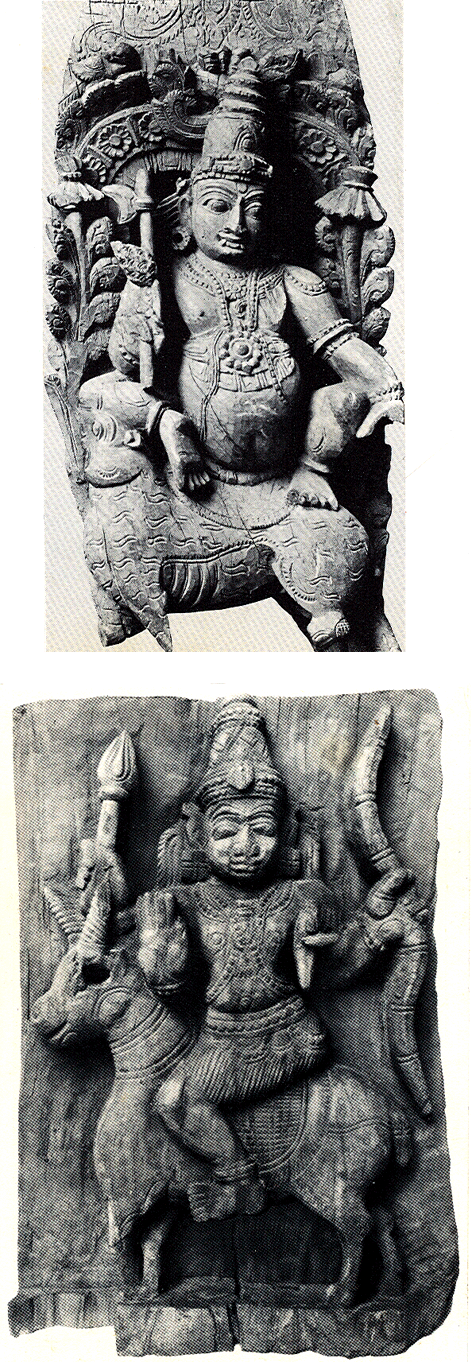
Image may be NSFW.
Clik here to view.![http://www.anthropologieenligne.com/images/soma_1.gif http://www.anthropologieenligne.com/images/soma_1.gif]()
Clik here to view.

Two representations of the god Soma
Soma is a spirituous liquor obtained by the pressing of a plant that grows on the mountains. Its name means evenly: "the squeezed", the "expressed" ( Somah ). The sacrifice of soma is performed annually in the spring, a day of syzygy. It is a complex ritual that includes the particular diksa , animal sacrifices, home construction, the installation of "trucks soma" boards squeeze, resonators (for amplifying the sound of pressing). Sips of water sprinkler, stalks are hit by the stones of the press; The resulting juice is then filtered through a sieve wool ... Soma mystically drunk. As formidable as beneficent as the sacred power: "Do not make us tremble O Soma, we do not inspire fear O king, thy violence does not break our hearts" (RV VIII, 68.8). It is the drink of immortality, cosmic sap: "Where the Light shines, (Where bound waters of Youth ... Where runny honey to satiety ... Where satisfies every desire) Take me, Soma, I became an Immortal "(RV IX, 133.7). It is the quintessential offering of substance, the soul of sacrifice (RV IX, 2.10). The Indian scholars tell us that the soma that we release today has nothing virtues spoken of in the Vedic texts and the secret is lost. Asclepias acida ? hemp ? ephedra ? ... it is likely the fly agaric, Amanita muscaria , "fly-agaric" as the work of RGWasson demonstrated - Soma: Divine Mushroom of Immortality , Harcourt, Brace and Jovanovich, New York 1967.
Image may be NSFW.
Clik here to view.![]()
Clik here to view.
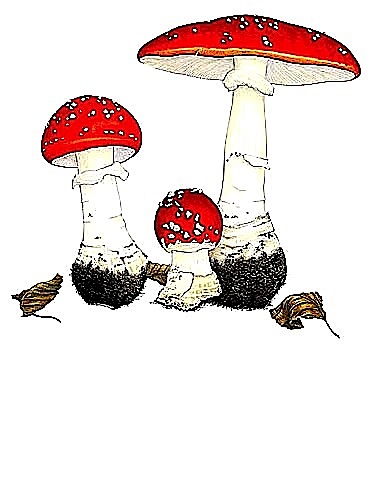
Image may be NSFW.
Clik here to view.![]()
Clik here to view.
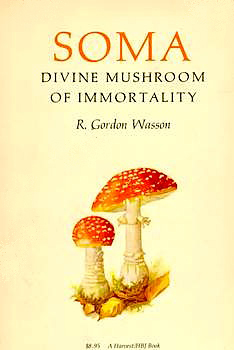
Image may be NSFW.
Clik here to view.![http://www.anthropologieenligne.com/images/Amanita.jpg http://www.anthropologieenligne.com/images/Amanita.jpg]()
Image may be NSFW.
Clik here to view.![http://www.anthropologieenligne.com/images/somawasson.jpg http://www.anthropologieenligne.com/images/somawasson.jpg]()
SOMA - Divine Mushroom of Immortality
R. Gordon Wasson
Publisher: Harcourt Brace Jovanovich, Inc.
(1967)Image may be NSFW.
Clik here to view.![]()
Image may be NSFW.
Clik here to view.![http://www.anthropologieenligne.com/images/muscarine.gif http://www.anthropologieenligne.com/images/muscarine.gif]()
Image may be NSFW.
Clik here to view.![http://www.anthropologieenligne.com/images/muscimol.jpeg http://www.anthropologieenligne.com/images/muscimol.jpeg]()
Muscarine and Muscimol
Clik here to view.

Clik here to view.

Clik here to view.

Clik here to view.

The active substance in the fly agaric is muscimol
which blocks communication between synapses and causes hallucinations
Anyway specific qualities of the substance obtained, one may wonder if the act of pressing the shoots and stems of soma would be magnified if he could not stand alone, an essential symbolism. It must be noted that the rite has continued despite the loss. The astounding virtues of the drink do not deplete its mystical significance: an "immortal" pressed by "fatal" (RV X, 3.1). His expression referred to the cosmic structure of being. "The minimal design of the pressed juice, written Renou, is compared to a rush in space, in a torrential downfall." "How many verses of the Book IX (of R-Veda) do we begin by describing the physical operation, outline the actions of the celebrant to jump sharply in the heavenly realm." There are at stake in "huge words to describe" facts very menus "( Vedic Studies and paninéennes , T. IX, pp. 9 and 13)." The substance oblatoire been an exaltation without measure " (id. speculative hymns of the Veda , p. 232).
but if we heed the warning of the Vedic theologians: "They think drinking soma itself when the plant is pressed, but that the Brahmans understand by "soma", no taste are never who lives in this world "(RV X 85.3 to 4), it should be paid to the issue of this enthusiasm." First fertilizing structures, native living order "," Father of the gods ", soma, for which Indra defeated the dragon, like Indra himself, the male MVP and the sacred word:
Excerpts from Rg Veda, IX:
3.8" Here the god flowing to the gods. "
6.1" 0 Soma, clarifies yourself bull magnet gods. "
14.4:" Leaving ooze its juice, soma runs through the screen, stripping the fibrous parts his body. Then aggregates to Indra, his ally. "
19.4". "Bull semen
46.3" Here is the soma, holders juices ritual satisfactions pressed in tanks that invigorent Indra through acts of sacrifice. "
48.1:" You who doors manly strength into the big sky stays. "
6l, 20:" You are the batter Vrtra, hostile. "
61.22:" You who Assistas Indra to kill Vrtra which blocked the mighty waters. "
63.7:" Clarify yourself by casting this same by which you made the sun shine by setting in motion the human waters. "
66.6:" the seven rivers flow according to your instruction, O Soma ; for you flow the dairy cows. "
68.5" Soma was born with the driving force, the faculty of thinking. "
68.6:" The poets holding it-meaning found the real shape of the intoxicating soma ".
69.3 "soma seconded both worlds, Heaven and Earth."
74.5: "She yelled sômique the rod associated with the wave of water; for humans, it inflates its envelope that attracts the gods. She lays in the lap of Aditi a seed by which we receive and son offspring. "
75.5" Neighing forcefully as a rutting horse in the herd. "
87.2:" Sire to the active force, the forestay sky. "
105.6" Evince be bifurcated. "
113.2" Pressed with the sacred word, the real, of confidence, of asceticism. "
what extracting the soma can it be equated with the liberating act and Indra creator? the operation performed on the plant is a pressing and filtering. Really and mystically, it is an expression and purification. If "Soma was the dragon "(S.Br. III, 9,4,2), the murder of Soma is the purification of Vritra, the dragon. Purify does not kill, it is express by dividing sublimate. Soma is not killed but only its evil. "evil is defeated but not killed Soma" (S.Br. III, 9,4,17) Identification of Soma and Vrtra, leitmotiv of Brahamanas illuminates nature the sacrificial purification. Struck by Indra, "Vrtra lay such a skin of leather emptied of its contents, such as a skin bag emptied of barley flour. Indra rushed at him, wanting to kill him. Vrtra said, "Do not throw your lightning against me! Here you are becoming what I was sharing me two! But do not leave me like this." Indra said, "Be my food and nodded Vrtra So!. Indra divided it in two , and this part of Vrtra who reported to Soma, the moon he regards. What was demonic in him ( asurya ) he brought him into the belly of the beings of this world "(S.Br. 1,6,3,16-17).
The term leaves like a broken fiber and husks of pressed. Men pull the soma plant that heaven fed. Soma is called "cloud Son" who deposits the seed like a fetus in plants (RV V, 83.7); stolen by an eagle and reported here below (RV VIII, 100.8), it grows on the mountain at the navel of the earth (RV IX, 82.3). The sacrifice of soma continues the gesture that opposes Devas and Asuras, celestial and chthonic hero hero. They say they are opposed to obtaining the sacrifice, but this struggle is sacrifice. Indra striking Vritra, but strikes and opens the mountain and these two acts are sometimes described as concurrent or making only one. "The theme of split mountains, writes Louis Renou, comes just when we expect the Vrtra". "Soma is trapped in the rock" (RV X, 68.8). Soma, Vrtra and mountains are identified S.Br. III, 4,3,13; III, 9.4, 2; IV, 2,5,15. It is striking Vrtra or Indra rock releases the beings that the rock imprisoning or Vrtra "encircled" (RV VII, 21.3). The term giri (mountain) is connected with gir : swallow and was approached grah : seize and Garta : grave. The act of separating into two Vrtra is to "split the bellies of mountains" (RV 1,32,1), the lap where gire, where is buried Soma, cutting into the sitting room ( yoni ), the den Vrtra "(S.Br. V, 5,5,6). the weapon of" murder "," the thunderbolt of Indra, the vajra , the "hardness", the "light" ( vajra also means diamond) that RV II, 11.5 qualifies as viryena is virility (Sanskrit vaja , Latin vigor: sexual vigor). The division - purification - taking possession of the stomach by the hero is the sacred science "Vrtra was afraid of lightning Indra lifted, he said:" There is here a source of strength, I'll give you, but me strikes not "and he gave him the sacrificial formulas Indra raised his lightning again Vrtra was afraid of lightning Indra lifted, he said..!" there is here (...) and he gave her the stanzas. Indra raised his thunder a third time. Vrtra was afraid of lightning Indra lifted, he said: "There is here (...) and he gave him the hymns" (S.Br. V 5,5,2-5). Sacrificial formulas, hymns and stanzas are the Veda. This does not mean that the Veda was a science "demonic" first possession of the snake because the Ophidian Maya is a production without order or the opposite of a science but rather, that the Veda is in the science snake charmer in the control and ownership of the snake. The first Brahmin was the first drinker of poison, eagle Garutman: "The science of the serpent ( Sarpa-vidya ) is the Veda" (S.Br. XII, 4,3,9).
The sacrificial act, the creative release, the act that gives the possession of the three Vedas repeat a single structure: the victorious confrontation of Man and the Serpent. The question of "what it is like" Vrtra is paramount.
In the Rg Veda, is Vrtra once said "first born of snakes." There are specific references to notes Renou, nor about Vrtra nor about Ahi ( ahi snake means). Ahi is said once abhogam , "the kinks" (VII, 94,12). "The myth comes down essentially to the formula:" Indra kills Vrtra "act which constitutes the" work virile "Indra (IV, 19.10) If Vrtra is defined by negative characters. APAD "without feet" ahasta "without arms" (as the earth itself described as ahasta and apadi - X, 22.14), kunâru , "paralyzed" or "penguin" (III, 30, 8) vyamsa "without shoulders," viparvam , "devoid of joints," Renou values that qualifies as "revealing physical 1'inintégrité", plus negative epithets revealing 1 "moral inintégrité" (if you want to do for the expression of Renou) piyaru , "the evil designs" (III, 30.8), and "false speech", all characters that do adeva "antithesis of the divine," if his arms ( " rarely is the enemy of Indra is represented as armed ") are" fog "(II, 30.3)," darkness "(X, 73.5), is not it that it is impossible personification of everything that is the opposite of being? and what results from the composition of all these negative characters is what makes precisely the generality of monsters: the lack of structure (or the mixture of structures) ?
The physical inintégrité carries a moral meaning expressed here this reptilian be no form, or almost no hard 1'indistinction to the earth: "amorphous" , "asleep" or "no eyes" , "limp" ( "his mother lay on him like a cow and her calf" - I, 32.9), "like death" (the adjective sî , "lying" is applied to him before and after the fight), not appointed by a registered but by a neutral, Vrtra is, according to Benveniste and Renou, a "mass obstructing" a "resistance". The traditional etymology interprets "Constrictor": "Vrtra wrapped ( avrnot ) these worlds" (TS II, 4) 12). "Because he grew up in before rolling ( VRT ), he became Vrtra" (S.Br. I, 6,3,9). As Namuci, "Whoever does not let go," said Panini (6,3,75) ( "Titan Crampon", translated Coomaraswamy), it expresses the embrace of what is "personifies" the inertia of the material, the suction passivity or resistance against which stands the resolution of the act. Vrtra is the obstacle to the event, to creative expression. The act of Indra, Vrtrahan, "Killer Vrtra" which puts an end to the career of this monster "is growing day by day" (III, 31,13) and "occupies the three worlds" (Brahaddevatâ, 6.121), consists of the "issue" of his reptilian fatality. Vrtra was "not divided, insatiable, without waking, sleeping a deep sleep, lying against the seven cliffs" (IV, 19.3), Indra the "breath out of the atmosphere" (VIII, 3.20) "the cut as the joint of beef" (I, 61.12), the shade "as the ax cuts down the trees" (X, 89.7), the strike "a place without articulation" or "so to be dislocated "(IV, 19.3). Vrtra lies now, "cut into pieces", "like a severed pipe" (I, 32.8). Thus Indra he hits the destructive demon anindrâm "antithesis of Indra" (IV, 2,3,7-8). Antithesis of man, if man is the struggle against the formless, this resistance with resistance . Vrtra therefore symbolize a Mayan without structure and without law, without order profusion (also translated Vrtra by "omniform" - but has no form 1'omniforme) amorphous or shapeless, untimely or moved, as opposed to the distinction and the orderly production. A stifling Production (obstruction), an embrace that opposes production (resistance).
A text quoted above (S.Br. I, 6,3,17) states that "what was in demonic Vritra, Indra took him into the belly of the beings of this world." The intestinal serpent within the same body of man duality of form and formlessness. Belly and meat product assigned to man the hunger and death. In contrast to the chaos and material inertia, individuation and distinction appear to consciousness as the phenomenology of the order. The beautiful sign of self-possession (as expressed in the famous phrase of Hegel on Greek art: "And the statue without eyes watching us from head to foot - demarcated Charmide (154 d):" Ah, if thou saw naked, all you seem faceless "), grace is what removes material, the ugly gravity of matter in the form, monstrous matter without form or, more accurately, the entry form with the formless . the shape is awakening, intent, look, act ...
the elementary neuroconscience as noetic consciousness supposes vigilance. To stay up, we need to keep awake. But the noetic activity n is possible only for the autonomy of the "internal environment" (Claude Bernard), the automatic control releases the higher brain functions. the visceral is subject to the sympathetic nervous system, known as autonomous, responsible for activity of smooth fibers, particularly digestive motility and vasomotor process of expressing emotions and sexual physiology. If the work of digestion occupied us as he occupies the anaconda just swallow prey, for example, any activity would be banned ... But because we autonomous, with its own "truth", this life organ, awareness may want to be the only life and want to lose it. When she wants to be free, it is perceived as "resistance".
Many myths included the opposition of form and the formless consciousness and vegetative life by the struggle of the eagle and the snake that perpetuates the struggle solar heroes and chthonic powers. "Typhon-Set, wrote Plutarch, this is part of the soul, passionate, titanic, irrational and impulsive, and this part of the body is perishable, sickly and disorderly, as shown irregularities in the seasons and temperatures, eclipses of sun and moon, as it breakouts and irregularities due to Typhoon (...) whose name means "restraint" or "obstacle" ( Moralia , 371 b). "obstruction", "resistance" is what we have recalled the meaning of Vrtra.
Image may be NSFW.
Clik here to view.![http://www.anthropologieenligne.com/images/garuda_1.gif http://www.anthropologieenligne.com/images/garuda_1.gif]()
Image may be NSFW.
Clik here to view.![]() Garuda, destroyer of gods, enemy of Ophidian wrong. Indian painting (eighteenth century)
Garuda, destroyer of gods, enemy of Ophidian wrong. Indian painting (eighteenth century)
Clik here to view.

If the folds of the intestine may include a snake, the respiratory system can be represented by the eagle whose wings represent both lungs, beak, head and neck, the upper part of the whole. Respiratory and digestive system are separated by the diaphragm which is the muscle of the respiratory movement. Meditation on the breath that opens the way for the post-Vedic conception of sacrifice ( "The gods are born of mental blasts and related mental In them metaphysically is sacrificed." - TS VI, 1.4, S) is realized in the breathing techniques of yoga. These rely on the function of the diaphragm between the anaerobic aerobic world world. The breath control ( pranayama ) is revealed an indirect share means the vegetative life. Subject to certain limits, voluntary action, the aerobic system governs the anaerobic system. The breath (air, subtle, incorruptible) takes possession of the body. The eagle control the snake.
In general, being reptilian symbolizes (in its negative values, because it is also positive values conferred to the snake), as opposed to the will and restraint which picks for the act, inertia and passivity that condemn existing on the fixity and disappearance, as expressed in the evolutionary fact and existence adrift. Secured to the invention, the action is like the genius of the form. Nausea from the foul has to meet 1'éblouissement form. When the irrational even life as the perishable, the divine is said in the act, in the breath, in the sense.
By self-sacrifice (sacrifice of an animal victim, diksa , soma sacrifice ...) sacrificing frees from death. It makes grounded this impure body as intestinal bowl the ball, pods, seed coats - whatever is excreted - and amounts to meaning. The sacrificial separation releases two antagonistic principles. One tends upwards and the other downwards: the intangible and body. At the time of sacrifice the animal victim, they say: "Do go in the sun his eye, spread to the wind its breath, the atmosphere his life, his hearing to the regions, to land his body" (AS III, 3.1 ). What is expressed, the sense ( "the offering of soma is in-body" - A.Br. II, 14), which is excreted, it is evil and death. This separation repeats the founding act which is the source of the event. The sacrifice, the "substance" and expressed the god are one.
The victory of Indra is a liberation of the sensible life:
- The waters were "surrounded by the serpent" (RV VII, 21,33), darkness (Vrtra) "oppressing the receptacle of waters" (I, 54, 10) the lightning of Indra "opened the water shut" (I, 54,10), "rivers drilled holes" (II, 15.3). ( "Indra made sure that the waters flow together to the man he killed the dragon, he spilled the seven rivers, he opened the clogged holes..")
- "He separated heaven and earth" ( V 113.4). "By his strength, he spread both worlds, Heaven and Earth" (VIII, 3.6). As Vishnu and Vishnu (three not open the space to the man) "he wider median space and spread the spaces to allow the man to live there."
- "He made the sun shines" (VIII, 3.6).
The victory of Indra frees space and time of the event ordered by submitting the "matter" of the law. It is the law that overcomes the formless, misfortune and death. The ritual, sacrifice and hymns repeat this original law. Agni has established the earth and supported the sky "with effective formulas" (RV 1,67,5), and what did the gods, the men reiterate. This is why the sacrifice may be said, "human Father" (X, 100.5) and "navel of the world" (1.164, 35). "May we said a hymn of Rg Veda, become Angiras of Heaven and break, shining, stone which contains treasures" (IV, 2.15). Indeed: "They with the law (" with their anthems "- I, 71.2) and split into two separate stone" (IV, 3.11). "With the divine word (...) the confused darkness disappeared, the sky shone; the splendor of the divine day is breaking; the sun is lying down on the high fields, distinguishing it among mortals is right and what is not "(IV, 1.17).
By "manly work" by "law" Vrtra (the introvert) is subverted ( udvrit ), extrovert ( samvrit ) converted ( prarvrit ). ( "The Serpent chthonic is" converted "or" externalized "Darkness returned" - Coomaraswamy, 1978. 52).
Image may be NSFW.
Clik here to view.![http://www.anthropologieenligne.com/images/istanbul.gif http://www.anthropologieenligne.com/images/istanbul.gif]()
Image may be NSFW.
Clik here to view.![]()
Istanbul Mosaic Museum.
Image may be NSFW.
Clik here to view.![]()
Image may be NSFW.
Clik here to view.![http://www.anthropologieenligne.com/images/ornitho.gif http://www.anthropologieenligne.com/images/ornitho.gif]()
Ornithologia Ulysses Aldrovandi 1599
The fight of the eagle and the snake.
Clik here to view.

Clik here to view.

Image may be NSFW.
Clik here to view.![http://www.anthropologieenligne.com/images/promethee_vat.gif http://www.anthropologieenligne.com/images/promethee_vat.gif]()
Image may be NSFW.
Clik here to view.![]()
Atlas and Prometheus (the Vatican Museum)
Clik here to view.

Image may be NSFW.
Clik here to view.![http://www.anthropologieenligne.com/images/promethee_1.gif http://www.anthropologieenligne.com/images/promethee_1.gif]()
Image may be NSFW.
Clik here to view.![]()
"That must not seek the secrets of Heaven," John Baldwin Collection of various emblems , 1638-1639
Image may be NSFW.
Clik here to view.![http://www.anthropologieenligne.com/images/aigleserpent_3.gif http://www.anthropologieenligne.com/images/aigleserpent_3.gif]()
Image may be NSFW.
Clik here to view.![]()
Tondriau in 1974.
The crucified serpent
(the quartering of the Cross significant division,
opening points of the compass.)
Image may be NSFW.
Clik here to view.![http://www.anthropologieenligne.com/images/aigleserpent_4.gif http://www.anthropologieenligne.com/images/aigleserpent_4.gif]()
Image may be NSFW.
Clik here to view.![]()
Martin de Vos 1585
"nailed Him whose arms were broken so many irons." (Marceline Desbordes -Valmore)
"For the four horizons
Who crucify the world ..." (Francis Jammes)
[sun crown (of thorns) / eagle / serpent exuvie / divider principle]
Image may be NSFW.
Clik here to view.![]()
Image may be NSFW.
Clik here to view.![http://www.anthropologieenligne.com/images/tau.gif http://www.anthropologieenligne.com/images/tau.gif]()
Clik here to view.

Clik here to view.

Clik here to view.

Clik here to view.

Initial Tau. Berthold Missal, Germany deb. XII s.
Axis mundi and convolutions of the event.
The axes of the cross of sacrifice give meaning to internal GIRES.
Image may be NSFW.
Clik here to view.![]()
Image may be NSFW.
Clik here to view.![http://www.anthropologieenligne.com/images/azteque.gif http://www.anthropologieenligne.com/images/azteque.gif]()
Sacrifice atop a temple. Magliabecchi 70.
In the Aztec sacrifice, the division of the solar component and the telluric ccnposante is well staged. At the top of the temple, the tortured hearts torn spilled on a terminal, the priests "was seized in and raised them toward the sun [...] In this way, he ate, gave him to eat" ( Florentine Codex , 111: 47). After opening the chest "as easily as opening a grenade", "they threw the victims from the top of the temple where they rolled to the bottom of the stairs and there, bathed in their blood." (Diego Duran, 1581, 1951, II: 86).
Clik here to view.

Image may be NSFW.
Clik here to view.![http://www.anthropologieenligne.com/images/axolotl.gif http://www.anthropologieenligne.com/images/axolotl.gif]()
Image may be NSFW.
Clik here to view.![]()
Axolotl, Florentine Codex , XI: 218.
In the myth, Xolotl, the god who refuses to sacrifice to turn the sun. This is double of Quetzalcoatl, infernal share (obscure, intestine, underground, underwater, creeping, undeveloped ...) subtracted at will. This constitutive duality shows the retort sacrifice the division that allows the individual, for the rite, to conjoin in the cosmic sense and social truth.
Image may be NSFW.
Clik here to view.![http://www.anthropologieenligne.com/images/serpantisem.gif http://www.anthropologieenligne.com/images/serpantisem.gif]()
Image may be NSFW.
Clik here to view.![]()
The triumph of the snake, anti-Semitic displays Bernd Steiner, 1920.
Image may be NSFW.
Clik here to view.![]()
Image may be NSFW.
Clik here to view.![http://www.anthropologieenligne.com/images/Topor.gif http://www.anthropologieenligne.com/images/Topor.gif]()
Topor 1968.
Image may be NSFW.
Clik here to view.![http://www.anthropologieenligne.com/images/labyrinthe.gif http://www.anthropologieenligne.com/images/labyrinthe.gif]()
Image may be NSFW.
Clik here to view.![]()
Image may be NSFW.
Clik here to view.![http://www.anthropologieenligne.com/images/tungerer.gif http://www.anthropologieenligne.com/images/tungerer.gif]()
Tomi Ungerer
Image may be NSFW.
Clik here to view.![]()
Labyrinth and internecine GIRES
Clik here to view.

Clik here to view.

Clik here to view.

Clik here to view.

Clik here to view.

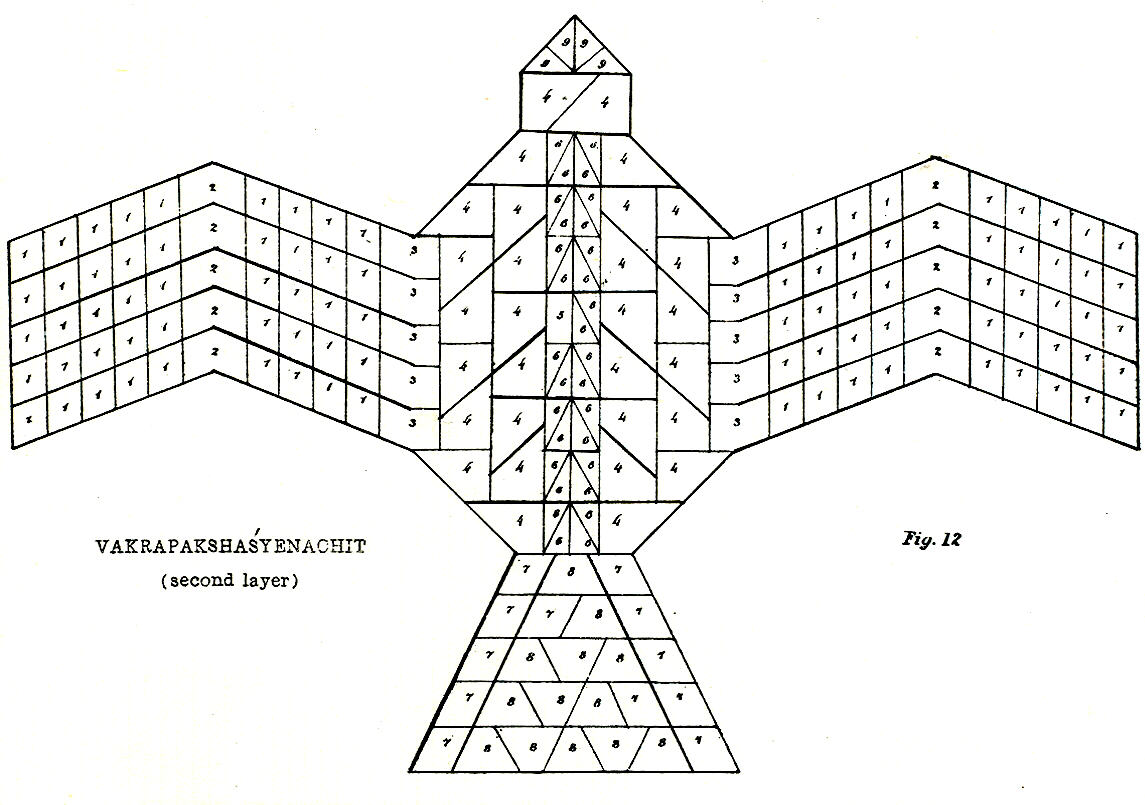
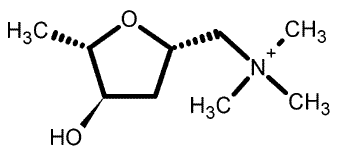
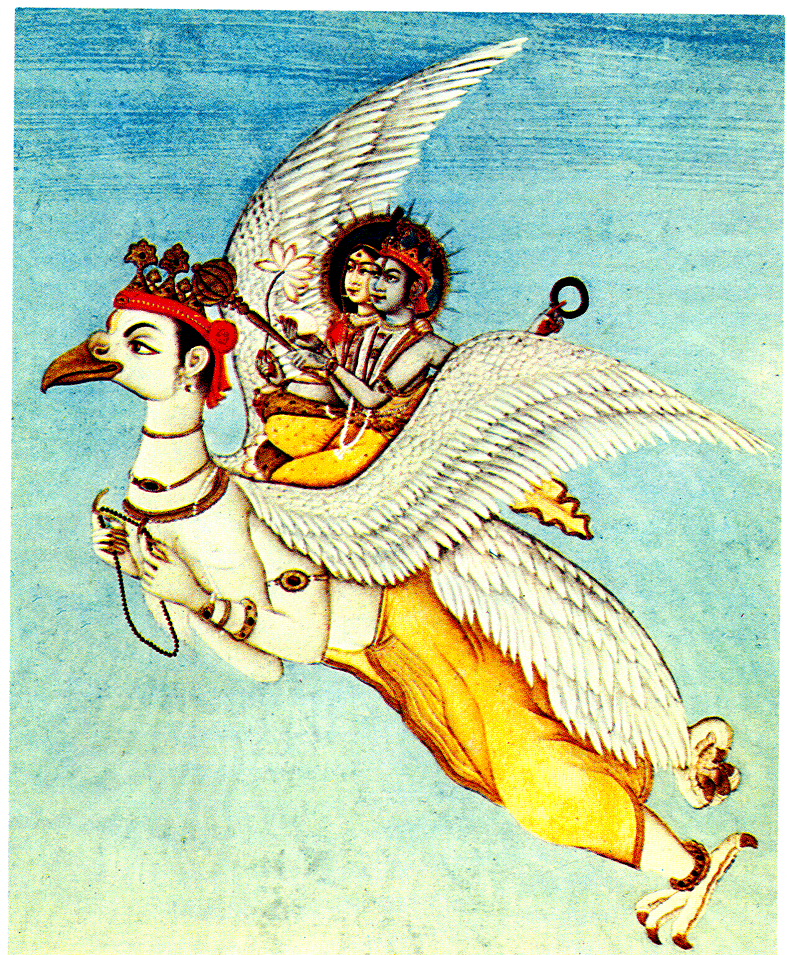
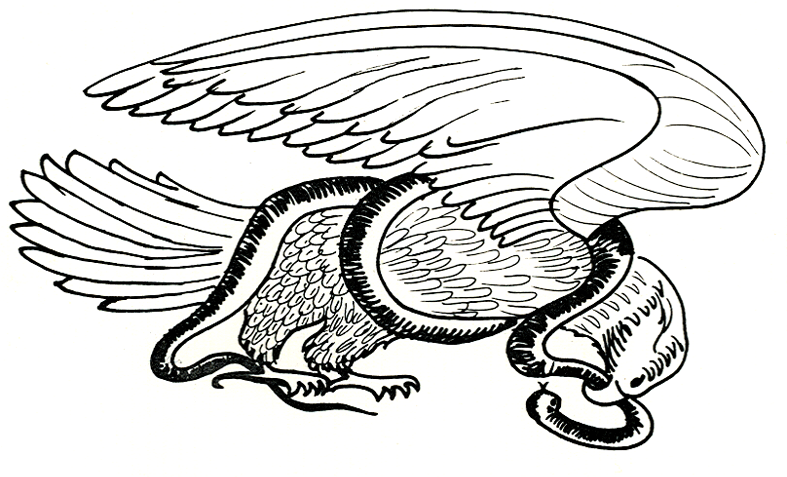
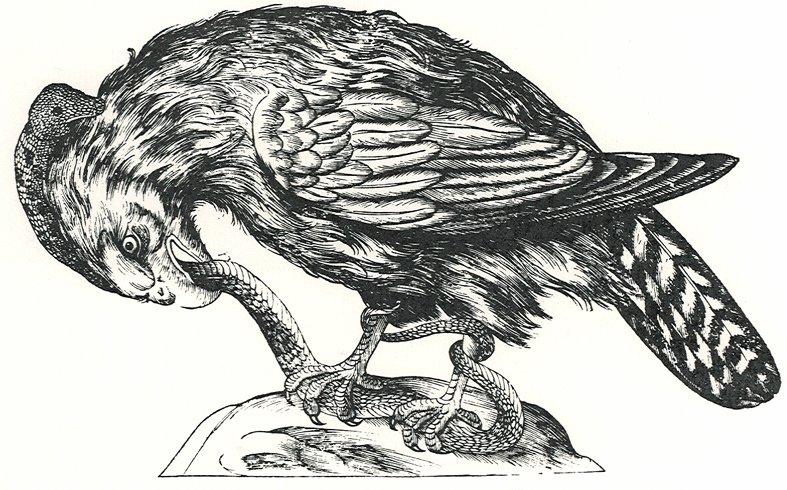
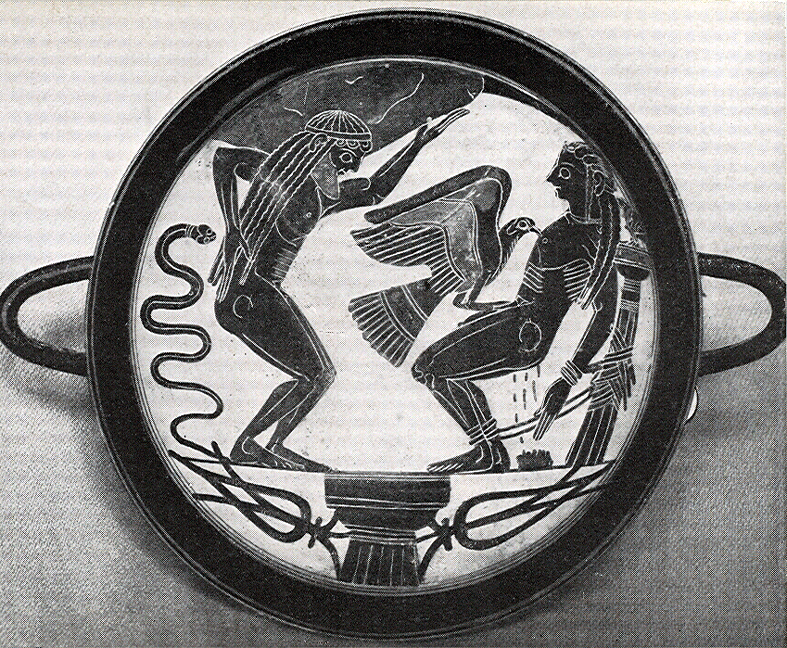
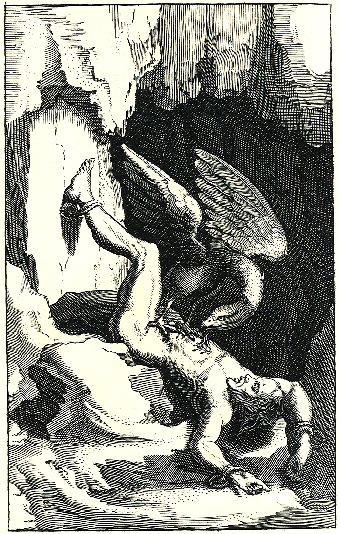
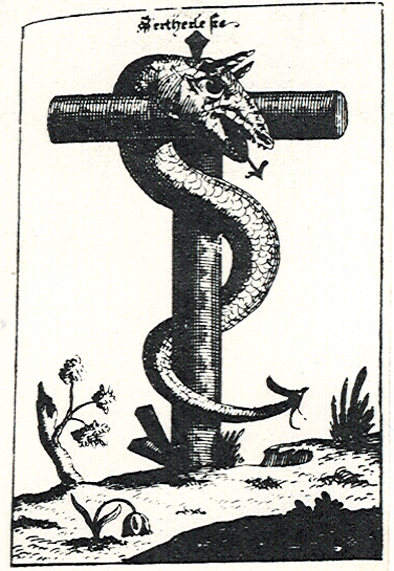
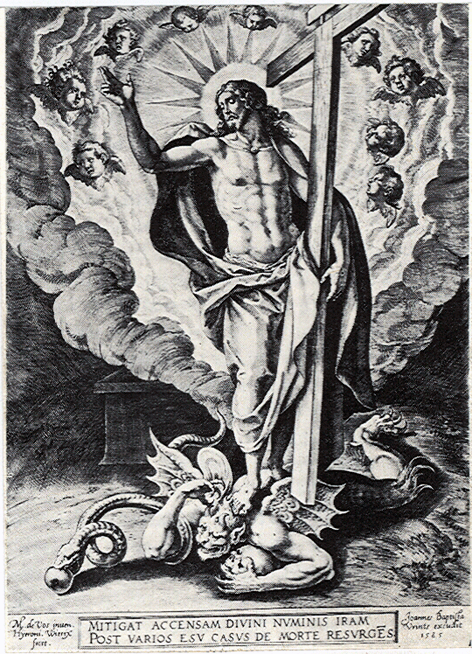
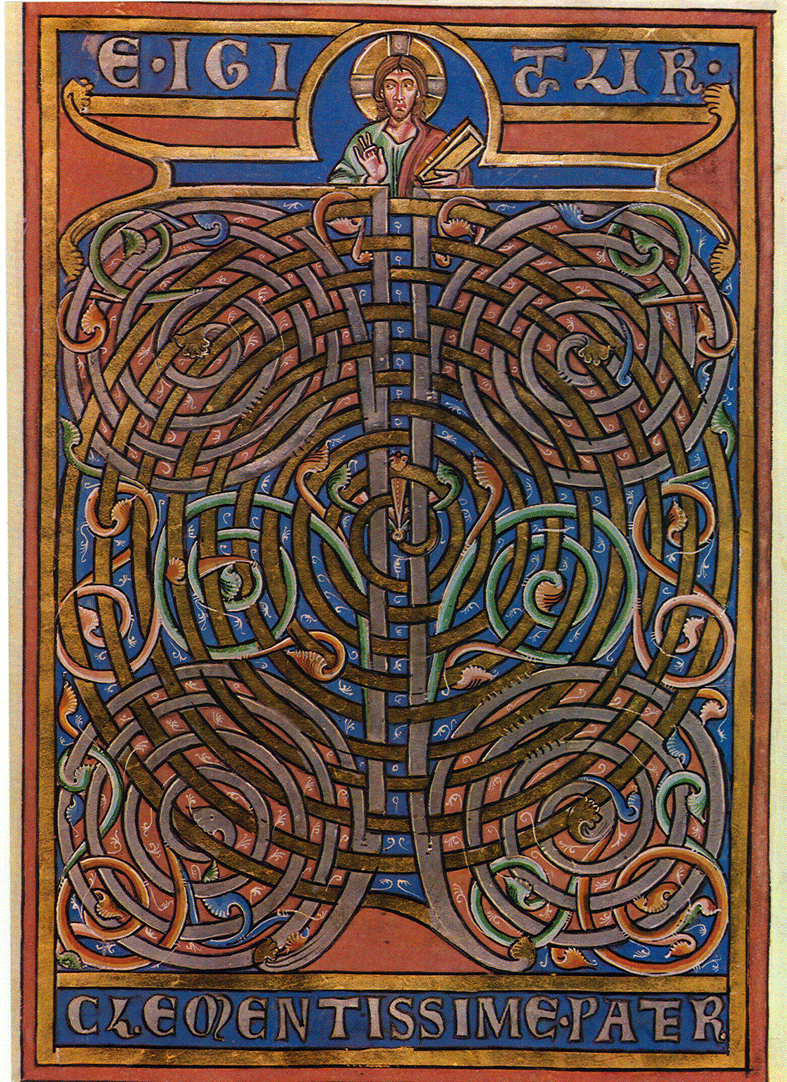
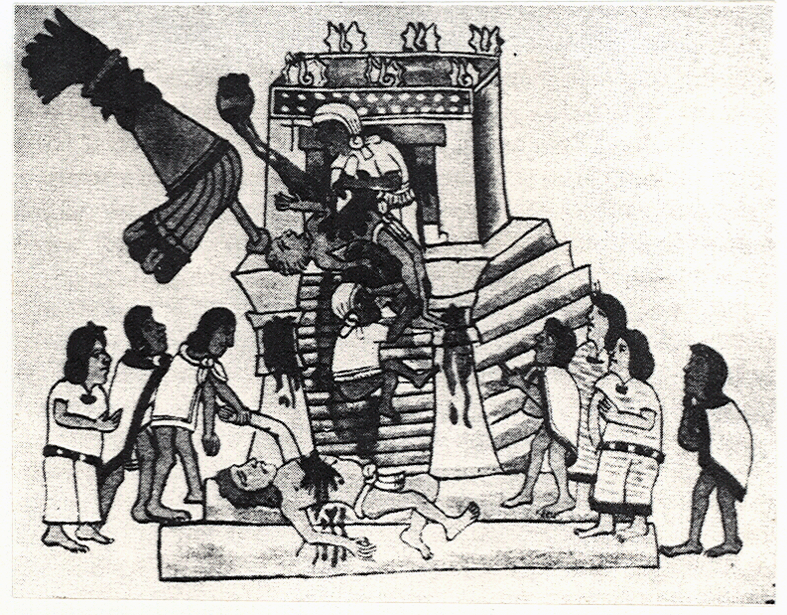
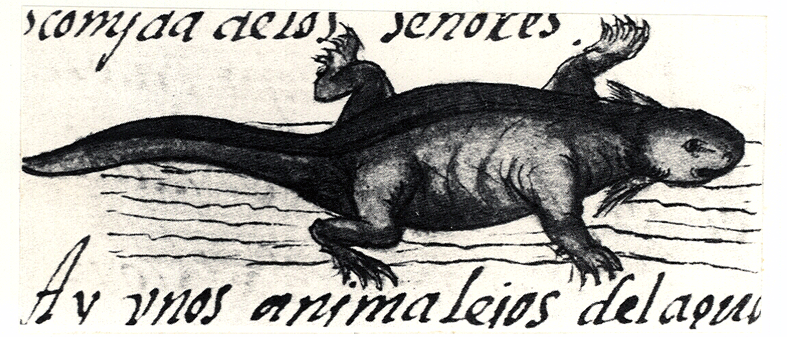
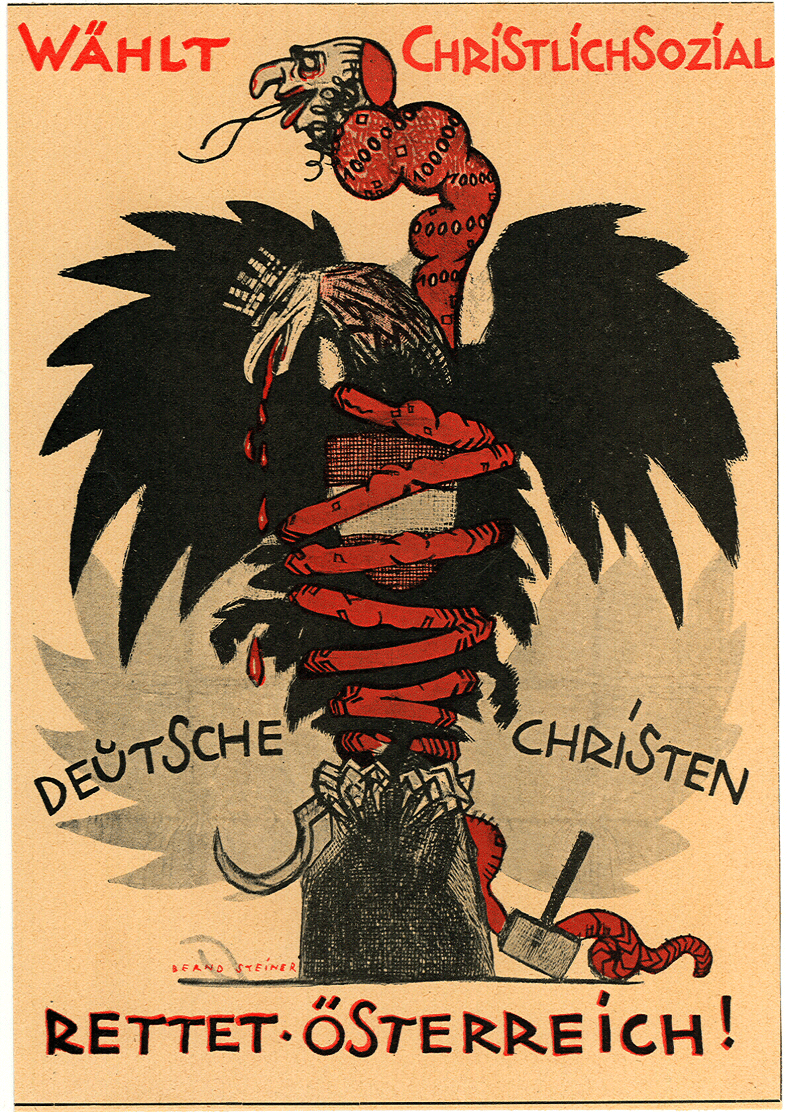
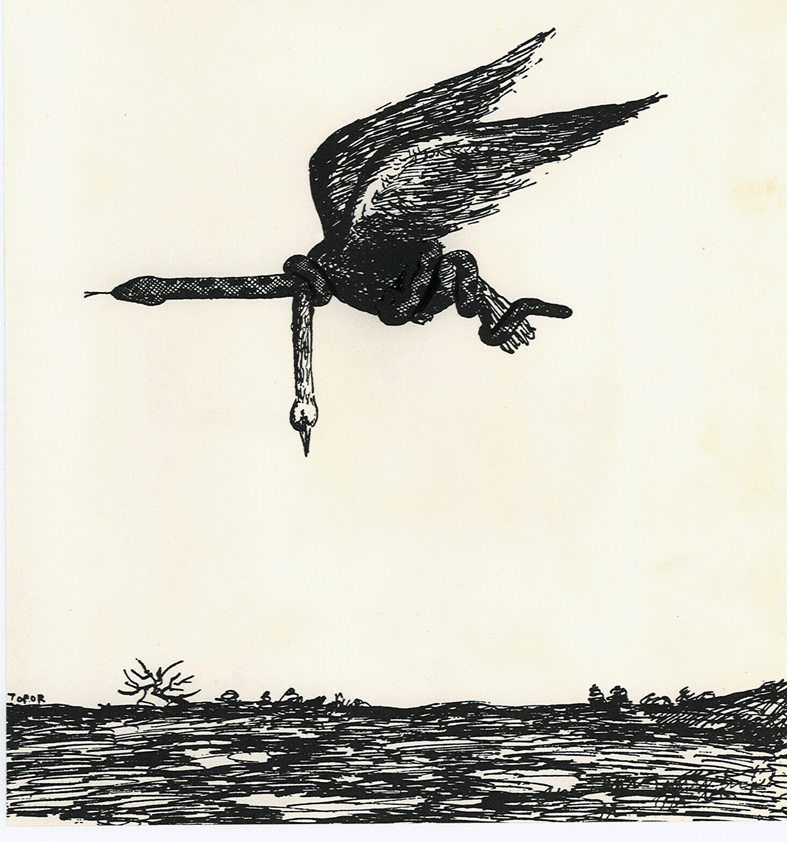
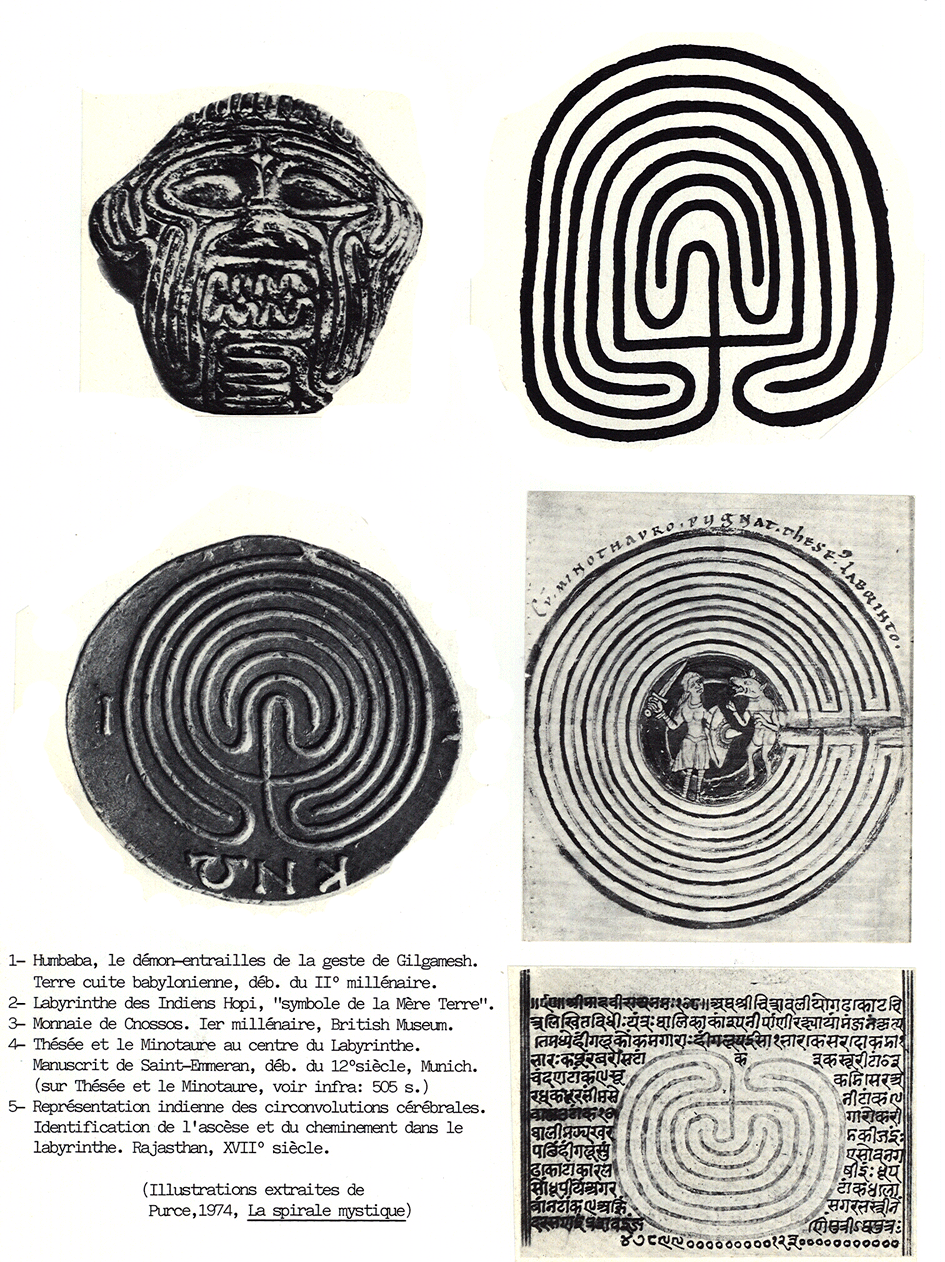
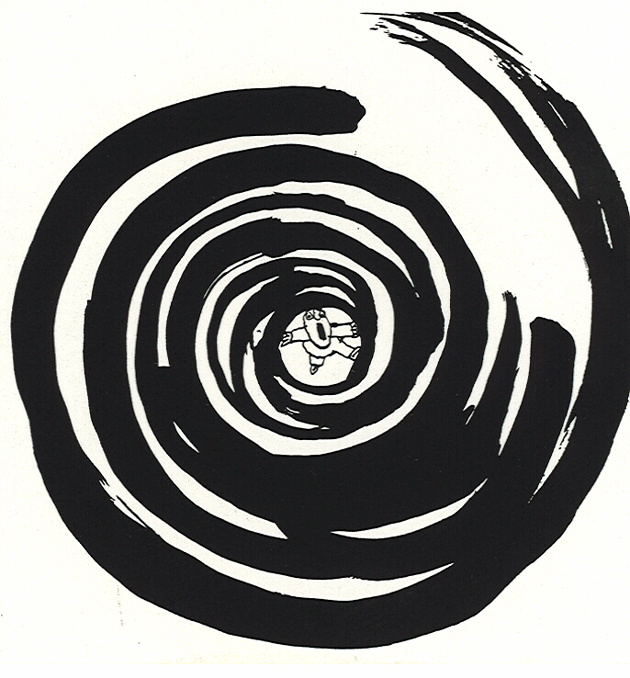



.jpg)

























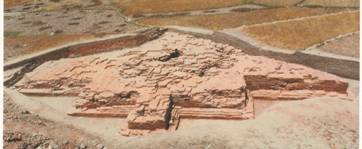





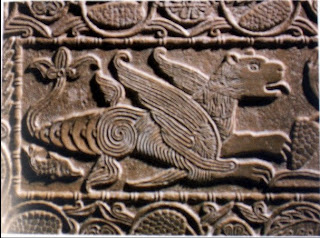





/cdn0.vox-cdn.com/uploads/chorus_asset/file/7863651/jbareham_170124_1415_getty_01.jpg)
/cdn0.vox-cdn.com/uploads/chorus_asset/file/7864301/jbareham_170124_1415_getty_03.jpg)
/cdn0.vox-cdn.com/uploads/chorus_asset/file/7864329/jbareham_170124_1415_getty_04.jpg)
/cdn0.vox-cdn.com/uploads/chorus_asset/file/7863689/jbareham_170124_1415_getty_02.jpg)



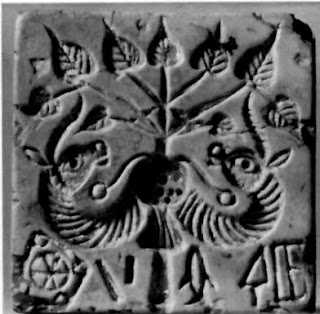










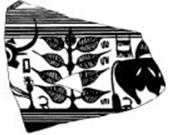



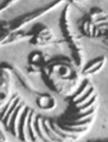

































T. P. Verma
Clik here to view.
Clik here to view.
Vajapeya is one of 7 samstha (profession) for processing/smelting soma (a mineral, NOT a herbal).
चषालः caṣāla on Yupa, is an Indus Script hieroglyph like a crucible to carburize ores into steel/hard alloys (vajra), i.e. calcine metals.
10.101.02 Construct exhilarating (hymns), spread forth praises, construct the ship which is propelled by oars, prepare your weapons, make ready, lead forth, O friends, the herald, the adorable (Agni).
10.101.03 Harness the ploughs, fit on the yokes, now that the womb of earth is ready, sow the seed therein, and through our praise may there be abundant food; may (the grain) fall ripe towards the sickle. [Through our praise: sow the seed with praise, with a prayer of the Veda; s’rus.t.i = rice and other different kinds of food].
10.101.04 The wise (priests) harness the ploughs, they lay the yokes apart, firmly devoted through the desire of happiness. [Happiness: sumnaya_ = to give pleasure to the gods].
10.101.05 Set up the cattle-troughs, bind the straps to it; let us pour out (the water of) the well, which is full of water, fit to be poured out, and not easily exhausted.
10.101.06 I pour out (the water of) the well, whose cattle troughs are prepared, well fitted with straps, fit to be poured out, full of water, inexhaustible.
10.101.07 Satisfy the horses, accomplish the good work (of ploughing), equip a car laden with good fortune, pour out (the water of) the well, having wooden cattle-troughs having a stone rim, having a receptable like armour, fit for the drinking of men.
10.101.08 Construct the cow-stall, for that is the drinking place of your leaders (the gods), fabricate armour, manifold and ample; make cities of metal and impregnable; let not the ladle leak, make it strong.
10.101.09 I attract, O gods, for my protection, your adorable, divine mine, which is deserving of sacrifice and worship here; may it milk forth for us, like a large cow with milk, giving a thousand strreams, (having eaten) fodder and returned.
10.101.10 Pour out the golden-tinted Soma into the bowl of the wooden cup, fabricate it with the stone axes, gird it with ten bands, harness the beast of burden to the two poles (of the cart).
10.101.11 The beast of burden pressed with the two cart-poles, moves as if on the womb of sacrifice having two wives. Place the chariot in the wood, without digging store up the Soma.
10.101.12 Indra, you leaders, is the giver of happiness; excite the giver of happiness, stimulate him, sport with him for the acquisition of food, bring down here, O priests, Indra, the son of Nis.t.igri_, to drink the Soma. [Nis.t.igri_ = a name of Aditi: nis.t.im ditim svasapatni_m girati_ti nis.t.igri_raditih].
Clik here to view.
Clik here to view.
Clik here to view.
Clik here to view.
Clik here to view.
Clik here to view.
Clik here to view.
Clik here to view.
Clik here to view.
Clik here to view.
Clik here to view.
Clik here to view.
Clik here to view.
Clik here to view.
Clik here to view.
Clik here to view.
Clik here to view.
Clik here to view.
Clik here to view.